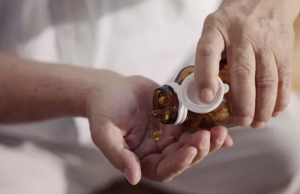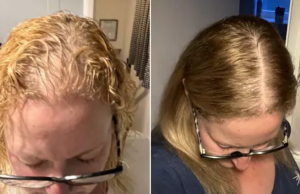Why Is My Aloe Plant Dying?
– Incorrect Watering Routine
Aloe plants are succulents. These kinds of plants are able to endure and even flourish in arid environments. Even under drought environments, they survive.
Aloe plants do not need to be watered frequently as a result. Dragging them in water till the soil is moist would be the proper course of action. Do not water the soil again until it has totally dried out.
The season will determine how often you need to water your plants. Because the soil dries out more quickly in the summer, more regular watering will be needed. Faster soil drying is another effect of warmer interior spaces. Keep a careful eye on the plant and water it as needed.
– Soil Not Well-drained
The holes in the pot or container need to be large enough to let the water go out if your soil is well-drained. If the holes get clogged, the roots of the plant will stand in water for long periods of time.
The plant will wither and decay if the roots continue to be wet. After a rainstorm, there’s no need to water because the soil will have enough moisture. Keep an eye on the state of the soil and wait for it to dry out.
– Underwatering

Your aloe plant might be killed by overwatering, but it can also be gradually dried off by submerging it. Despite being able to thrive in drought conditions, the plant still requires some amount of water.
Look for signs of leaves turning brown or yellow. The leaves may also turn brittle and droop. These are signs that the plant requires water. Remember to keep the plant’s soil moist, not dry or soggy.
– Wrong Soil Choice
Rich potting soil is not necessary for aloe plants. They require gravelly, sandy, dry soil. Rich potting mixtures have the potential to destroy aloe plants.
To plant the aloe, you can also prepare a soil mixture using silt, clay, and soil. Mulch, organic manure, and mixes of peat and perlite can also be beneficial to the plant.
– Too Much or Too Little Sunlight

Aloe plants can withstand intense sunshine. Six to eight hours of sunshine per day are ideal for the plant’s growth, but too much sunshine might stress out the plant and even kill it. Have a shade screen to shield your plant from the harsh afternoon light if it is outside.
If your plant is indoors in a dark place, this condition can damage the plant as well. The succulent plants do not do well in shady and dark places. You will notice droopy, discolored leaves if your plant is left in this condition.
Ensure your plant is in a spot that receives enough sunlight and warmth. The right amount of sunlight is essential for the plant. Dark places also keep the soil damp, which will result in root rot and the death of your plant.
– Planted in an Incorrect Spot
If your aloe vera is under trees or large bushes, the plant can slowly die out. Aloe vera plants thrive in bright sunshine, so trees and bushes can block the sun out. Move the plant out to a sunny spot in your yard or garden.
– Incorrect Temperature
Warm weather conditions are ideal for aloe plants to flourish. Additionally, they are sensitive to temperature changes, so stepping from a hot setting to an unexpectedly chilly one can kill them.
The leaves will turn brown when the temperature is too cold. At the same time, the leaves will get sunburnt and turn brittle when the temperature is too hot for the plant. Ensure the plants are at a temperature between 60 to 80 degrees Fahrenheit.
If there are temperature dips during the night, protect your plants with a blanket to keep them warm. You can also move them indoors if they are in a pot during the winter.
– Excessive Humidity
Compared to other plants, aloe vera requires less humidity. Because they are succulents, they can withstand dry weather by holding onto moisture. The plant cannot flourish in an environment with too much moisture, such as that which is provided by excessive humidity.
Aloe plants in humid spaces indoors will require dehumidification. This will reduce the dampness around them as high humidity can slowly kill the aloe plant.
– Incorrect Pot Size
Make sure the container your aloe plant is in is large enough for it. The roots of the aloe plant will extend out as it gets larger in search of more room and nourishment. It won’t be beneficial for them to be packed in a tiny container.
Transplant your aloe plant into a bigger container when you notice that it has grown. The leaves will be a perfect indicator that it is time to do so. If the leaves are the same size or bigger than the container, it is time to move them to a bigger pot.
You can also slowly lift the plant from the base of the stem. If you notice a tight mass of roots that are difficult to untangle, it is time to move your plant to another container.
– Pest Infestations
A droopy and lifeless aloe plant can have pest infestations. These pests suck the sap out of the thick stems to make them limp. The sap of the aloe plant is its nutrients, and without it, they eventually die.
Look for pests or eggs on leaves. As pests begin to die on the leaves, you will find tiny brown spots all over.
Snout beetle is a popular pest on the aloe plant that punctures the leaves. Any such large infestation can weaken the plant and kill it, so remove pests as soon as you spot them.
How To Revive
If you find your aloe plant droopy and lifeless, you can revive it through several methods such as fixing your watering schedule, using rooting powder and changing the container, among others.

– Tackling an Overwatered Plant
You may still prevent waterlogging at the roots of your aloe plant even if you have unintentionally overwatered it. After digging the soil, allow it to dry out for a few days.
Remove any mushy leaves or roots from an aloe vera plant that appears to be dying in order to save it. The excess water surrounding the plant can also be eliminated by allowing the soil to breathe.
– Use Rooting Powder
Another way to tackle an overwatered aloe plant is to dust the base of the plant with rooting powder. After this, replant it in a container with a proper drainage hole. In a couple of days, you should be able to see the plant reviving and growing healthy leaves.
– Change the Container
Select a container with large base drainage holes. Aloe plants require a planter with holes that drain properly. To avoid root rot brought on by waterlogging, make sure the drainage holes are large enough to allow the water to flow out.
A bigger container will work towards keeping the roots healthy.
– Provide the Right Amount of Sunlight
Give your aloe plants at least 4 to 6 hours of direct sunlight each day to prevent them from drooping. Take them outside to a sunny area of your yard.
When moving them to the sun, do it gradually. The plants can’t handle sudden shock or changes in temperature. Gradually expose them to the required sun; do not move your aloe plant from shade to intense sun in a day.
Help them acclimatize by moving the pot back and forth for shorter durations in the sun over a week or two. This will give the plant time to adjust to the sunlight.
– Scale Back on Watering
Even during the summer seasons, aloe plants do not require frequent watering. Water aloe plants only when the soil has completely dried out. This could vary anywhere from once a week to a fortnight, depending on the weather and temperature in your area.
– Transplant It Properly
Prepare a plant container that is double the size of the plant. Check to see that the pot has holes that drain the water well. With the help of a sharp knife, remove the plant from the small pot. Replant and water to keep the soil moist.
Taking Care of a Dying Aloe Plant

– Indoor Aloe Plant Care
If you have your plant indoors, place it in indirect yet bright sunlight, ideally near a window on the south or west side of your house. If you are growing your plant indoors, keep it away from air conditioners, which can blast it with constant cold air.
– Tackle Pests
Spray the aloe plant with an alcohol-based solution. This will help in killing the pests on the plant. For snout beetles, sprinkle some insecticide powder.
Fungus gnats are best removed by drying out the soil. These bugs thrive in damp conditions, so moving the plant gradually into the sun will help.
– Flush the Soil
Another way to save your aloe plant is to flush the soil thoroughly. Place your aloe plant in your sink or any gentle water source and drench the soil.
Let all the extra water drain out of the pot. This will help wash away the fertilizer build-up in the soil. Leave the plant to dry its soil completely.
– Avoid Excessive Fertilizers
Do not over-fertilize your aloe plant. They don’t need it. If your potting soil came with fertilizer mixed in, then avoid adding anything more. Otherwise, you can fertilize the plant once a year during spring.
– Prevent Fungal Diseases
Aloe plants can be subject to fungal diseases. The common reason for this is overwatering. If you spot fungal spots on leaves, prune away the diseased leaves and reduce the watering, letting the soil dry out first.
Prevent further diseases by watering your plant correctly. Also, water the plant during the morning hours to give enough time throughout the day for the water to evaporate.
Use antifungals to get rid of fungal or bacterial diseases.
– Keep the Plant Comfortable
Monitor the plant temperature and moisture conditions. Temperatures that are too cold or too hot lead to shock, which can kill your plant. Maintain the temperature at 55 to 80 degrees Fahrenheit and the humidity needs to be at a level of 40 percent.
– Prevent Aloe Sunburn
Aloe plants are sensitive to excessive heat. Direct sunlight with excessive heat can cause sunburn. You will need to keep the plant in bright, indirect light to prevent this issue.
Water the plant more often during the summer months compared to the winter seasons, but make sure you check the soil first.
– Weed Out Dead Leaves
Dead leaves can draw nutrition from the healthy parts of the plant. These leaves can also infect the plant if they are diseased with fungi or bacteria.
Remove any dead leaves as soon as you spot them. This will protect the other healthy sections of the plant.
Cutting leaves also encourage thicker growth of the aloe plant. It will aid the plant to store nutrition, resulting in healthy aloe roots.
– Choose Terracotta Over Plastic
If your aloe plant is in a pot, choose terracotta pots over other materials. These pots are porous, thus allowing the soil to dry out quickly.
Avoid plastic containers as plastic does not breathe. It traps the moisture within it, leading to an increase in the humidity factor for the plant. On the other hand, terracotta pots allow the moisture to evaporate and make the water drain faster.





















